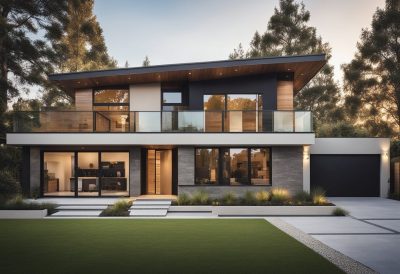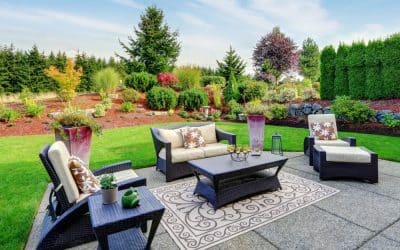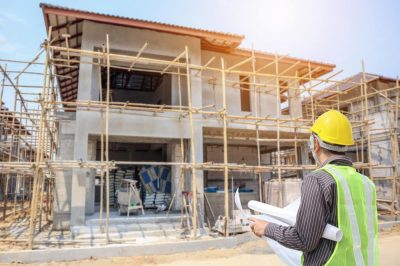
Every dog owner dreams of a backyard that’s green, comfortable, and easy to maintain — a place where pets can play freely without turning the area into a muddy disaster. When it comes to achieving that balance, the debate between artificial grass vs natural grass for dogs is becoming increasingly important. Both have unique benefits, and the right choice depends on lifestyle, climate, and how your dog uses the space.
Below is a detailed comparison to help you make an informed choice.
🟩 Quick Comparison Table: Artificial Grass vs Natural Grass for Dog Owners
| Feature | Artificial Grass | Natural Grass |
|---|---|---|
| Durability | Highly resistant to digging, wear, and urine; stays green all year | Easily damaged by running and digging; can develop bald spots |
| Maintenance | Minimal — no mowing, watering, or fertilizing | Requires frequent mowing, watering, and reseeding |
| Cleanliness | Drains quickly, no mud or puddles; easy to clean | Mud and dirt after rain; attracts pests and insects |
| Safety for Dogs | Non-toxic, pest-free, less allergens | Natural and cool underfoot, but may contain pesticides |
| Cost Over Time | Higher upfront, low long-term cost | Cheaper initially, but costly to maintain |
| Environmental Impact | Saves water; recyclable options available | Absorbs CO₂ but uses water and chemicals |
| Aesthetics | Always lush, even color and height | Natural beauty but seasonal changes |
| Best For | Active dogs, small yards, low-maintenance owners | Large shaded yards, owners who enjoy gardening |
1. Durability: Can It Handle Rough Play?
Dogs are tough on lawns. Their running, digging, and daily zoomies can quickly wear out even the healthiest natural lawn.
Natural grass is prone to damage. Repeated foot traffic compacts the soil and kills grass roots, leading to uneven patches. Urine burns are another issue — nitrogen in dog urine discolors or kills the grass, leaving yellow circles that rarely recover without reseeding. Over time, constant patch repair becomes exhausting.
Artificial grass, by contrast, is built to last. The polyethylene or nylon fibers are engineered to withstand constant movement without flattening. Turf also includes a backing system that holds the blades firmly in place, so even energetic dogs won’t dig through it easily. The color remains consistent, and the surface looks well-kept all year, even under intense use.
✅ Verdict: Artificial grass wins for durability. It keeps its lush look for years, no matter how much your dog plays.
2. Cleanliness and Hygiene: The Mud-Free Factor
For most dog owners, the biggest frustration with natural grass isn’t mowing — it’s mud. Rain, snow, or even a morning dew can turn the ground into a slippery mess. Dogs track dirt and moisture into the house, and the smell of wet grass becomes a constant nuisance.
Natural lawns also attract bugs and parasites. Fleas, ticks, and ants thrive in moist grass, posing potential health risks for pets. Even when dry, grass clippings and pollen can irritate sensitive dogs.
Artificial turf, on the other hand, eliminates nearly all of these issues. It has an advanced drainage layer that allows water — and urine — to pass through instantly, leaving the surface dry within minutes. There’s no mud, no puddles, and no need to wash your dog after every outdoor session. Cleaning is simple: pick up waste, rinse occasionally, and use an enzyme-based cleaner if needed to neutralize odors.
✅ Verdict: Artificial grass is the hygienic choice. It keeps outdoor areas fresh and minimizes indoor cleaning.
3. Safety and Comfort: What Feels Best for Dogs?
The surface your dog walks and plays on matters. Comfort, temperature, and safety all affect how your pet enjoys outdoor time.
Natural grass offers a naturally cool, soft surface underfoot. Dogs instinctively love the texture and smell of real grass. However, pesticides and fertilizers — often used to keep a lawn healthy — can be toxic if ingested. In summer, watering and maintenance chemicals can also lead to skin irritation for sensitive pets.
Artificial grass has come a long way from the plastic mats of the past. Today’s pet-friendly turf is non-toxic, cushioned, and designed to replicate the feel of real grass. Specialized infill materials (like silica sand or cooling turf infill) prevent heat buildup, making it safe even on warm days. Plus, synthetic lawns discourage pests entirely, keeping fleas and ticks away from your dog’s play zone.
✅ Verdict: A tie — both can be comfortable, but artificial turf offers safer, cleaner play with fewer allergens or chemicals.
4. Maintenance and Upkeep: Time vs Cost
When comparing artificial grass vs natural grass for dogs, maintenance often becomes the deciding factor.
Caring for a natural lawn is time-intensive. You need to mow weekly, water frequently, fertilize, aerate, and patch bare spots — especially if dogs are active. The costs of seeds, fertilizer, pest control, and water usage can quickly add up, especially during dry months.
By contrast, artificial turf is nearly maintenance-free. Once installed, it requires no mowing or watering. You’ll occasionally brush the fibers upright and rinse debris away, but that’s it. For busy homeowners, this simplicity is one of the strongest advantages.
Financially, turf has a higher upfront cost (typically $8–$15 per square foot installed) but lasts 10–20 years depending on quality and use. In comparison, natural grass may seem cheap at first, but long-term maintenance costs often exceed turf installation over time.
✅ Verdict: Artificial grass is more cost-effective and time-efficient in the long run.
5. Aesthetics and Year-Round Appeal
Everyone loves a green lawn, but natural grass is seasonal. In cold or dry climates, it turns brown or patchy during winter or drought periods. Achieving perfect green color year-round requires ideal conditions, which few yards can provide.
Artificial grass stays green in every season. It maintains consistent height and color, creating a tidy look that enhances curb appeal. For homeowners who use their garden as an outdoor living space, the visual consistency of turf can transform the backyard into a polished, pet-friendly environment that’s always photo-ready.
✅ Verdict: Artificial grass delivers the most reliable year-round aesthetic.
6. Environmental Considerations
The environmental argument is complex.
Natural lawns help absorb carbon dioxide, reduce heat around the home, and provide habitat for small insects. However, their environmental cost includes heavy water consumption, chemical fertilizers, and frequent fuel use for lawn equipment. In water-restricted regions, this can make natural grass unsustainable.
Artificial grass requires no water, fertilizers, or pesticides — a huge environmental advantage in dry or urban areas. Yet, it’s made from synthetic materials that must be responsibly disposed of or recycled after 10–20 years. The good news is that new recyclable turf products and bio-based infills are becoming more common, reducing long-term ecological impact.
✅ Verdict: Depends on your region — artificial turf is more sustainable in dry climates; natural grass suits cooler, wetter areas.
Which Grass Is Best for You and Your Dog?
If your priority is cleanliness, durability, and convenience, artificial grass is hard to beat. It keeps your yard neat, requires minimal maintenance, and stands up to even the most energetic dogs. It’s also safer for pets with allergies or sensitivities.
However, if you have a large shaded yard, enjoy gardening, and don’t mind regular maintenance, natural grass still has its timeless charm. It’s cooler in the summer, smells wonderful, and connects you — and your dog — to the natural world.
For many modern homeowners, a hybrid approach works best: artificial turf in high-traffic pet zones, and natural grass or landscaping elsewhere. This combination balances sustainability, comfort, and practicality.
Final Thoughts
Choosing between artificial grass vs natural grass for dogs ultimately comes down to how you live with your pet. Artificial turf offers unmatched durability, hygiene, and convenience for busy owners, while natural grass delivers organic beauty and sensory comfort.
Whichever option you choose, the goal remains the same — creating a safe, enjoyable outdoor space where your dog can run, rest, and simply be happy.








